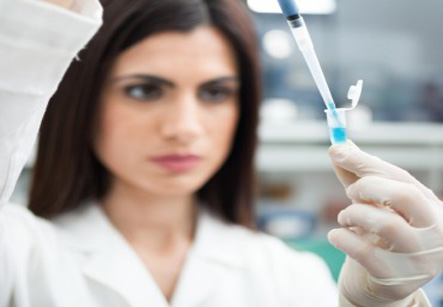Therapeutic Donor Insemination TDI
Introduction
Artificial insemination using donor sperm (AID) is one of the alternatives available for treating severe male factor infertility or for achieving fertility where no male partner is involved. It is known as therapeutic donor insemination (TDI) since the advent of AIDS. TDI involves placing cryobanked sperm from an anonymous donor in the uterus just before the time of ovulation.
Indications for TDI- Therapeutic donor insemination may be the treatment of choice in the following cases:
1. In the case of poor sperm count and no treatment working to improve sperm count and quality
2. If sperm capable of fertilizing an egg is difficult to recover, not even by intracytoplasmic sperm injection (ICSI)
Iran ranks first in the region in terms of infertility treatment studies

3. In case of male partner having undesirable hereditary traits/ disorders
4. In case of not being able to afford ICSI/ IVF treatment
5. For single women
6. Same sex couples
Source of donor sperm
1. Donor sperms are preserved at sperm banks.
2. Thorough selection is carried out on each donor before collecting and freezing sperm from him.
3. The process of screening involves a thorough family history, complete medical and social history, blood typing, screening for genetic disorder, sexually transmitted diseases, and screening for hepatitis B and C, HIV, CMV and many other genetic disorders.
4. Potential donors may be rejected if any abnormality is found in any of the screening tests.
5. Furthermore, each frozen specimen is quarantined after freezing and only released for use if the donor remains free of any infectious illnesses at least 6 months later.
Selection of a sperm donor
1. The sperm bank provides a list of donors available.
2. Brief descriptions is given of the donor – including racial or ethnic background, blood type, certain physical characteristics and/or certain social characteristics that may be important to the receiver.
Procedure
1. The receiver is checked first for any fertility problems, before opting for donor sperm insemination.
2. Ovulation of the female patient will be confirmed by supervising her menstrual cycles. This monitoring helps to collate information about length of patient’s cycle and the periodic schedule of ovulation.
3. Some baseline investigations like- blood tests to rule out infections (e.g. HBV, HCV, HIV, HTLV, and CMV) and hormone tests are done.
4. Patient’s urine samples are checked each day to determine the exact timing of ovulation. Approximately 24–36 hours prior to ovulation, a hormone called luteinizing hormone (LH) appears in urine. The ovulation predictor kit allows users to monitor urine for the presence of this hormone. When the test is positive, egg are ready to be released the following day.
5. When the urine test is positive, patient will need to contact fertility clinic so that arrangements can be made for the insemination to take place the following day.
6. Inseminations are performed seven days per week.
7. If a female does not ovulate regularly, or if her cycles are unpredictable, she may be requested to use a fertility enhancing agent.
8. The actual insemination process is very like having a Pap smear done. A speculum is inserted into the vagina, and the thawed, washed sperm is injected through the cervix into the uterine cavity using a special thin catheter.
9. The actual insemination procedure usually takes only a few minutes. Sometimes difficulty is experienced passing the catheter through the cervix, and the cervix will need to be held steady using an instrument called a tenaculum.
Success rate of TDI
1. This depends on many factors, the most important being the patient’s age.
2. For women under the age of 35, with no other fertility-related health problems, the success rate is about 18 – 20 % per treatment cycle or about 60% after 6 months.
Success rates decrease with age.